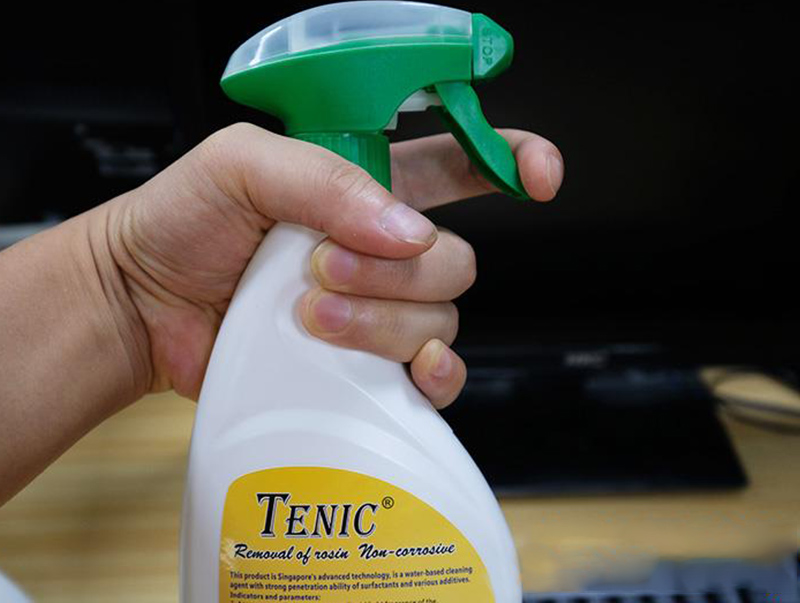
Product features:
C1008OVEN has strong ability to dissolve residual rosin in electronic products and oil stains in production equipment, and can achieve effective and rapid cleaning;
Using deionized water as the main raw material, it has no flash point, does not burn, and is safe to use;
Compliant with ROHS and REACH environmental directives, free of halogens;
○ It is miscible with water and does not corrode the body of products made of materials such as plastic, hardware, fibers, ceramics, etc;
○ No irritating odor, light fragrance, easy for operators to accept;
Can be reused repeatedly, effectively reducing costs.
Fast Acting Surfactant Technology
Fast acting surfactant technology "(FAST) ®) It is an innovative cleaning technology. Based on FAST ®) The cleaning agent of the technology is specially formulated with various newly developed surfactants, which can quickly and effectively remove various flux residues applied to lead-free and eutectic alloys.
Vibrant FAST ® Molecular:
This cleaning technique endows surfactants with shorter and more reactive molecular structures. Compared to traditional surfactant molecules, FAST ® Molecules have faster mobility on the surface of pollutants (Figure 1). This structure can significantly enhance its wetting ability, thereby effectively removing all residues. FAST ® Cleaning techniques can ensure excellent cleaning results within a short contact time. Therefore, based on FAST ® Technical cleaning agents are particularly recommended for high-pressure spray applications, such as online cleaning processes.
1. Speed: Traditional surfactants and FAST ® Comparison of cleaning agents
It is precisely because of its short and active surfactant molecular structure that the following experiments demonstrate FAST ® Compared with traditional surfactants, technical cleaning agents can remove all residual pollutants more quickly and effectively:
Fast Acting Surfactant Technology
A higher pollutant load is FAST ® Another characteristic possessed by technology
• FAST ® The branched structure of molecules only requires a small amount of active ingredients to effectively bind a large number of pollutant molecules, thereby completing thorough cleaning of residues on the substrate surface
This achieves lower consumption of cleaning agents and higher pollutant loading capacity, thereby extending the service life of the cleaning solution
Compared to traditional surfactants, it has a longer service life and can reduce the frequency of cleaning solution replacement, effectively reducing the overall process cost
• In collaboration with FAST ® The difference between technical cleaning agents is that traditional surfactants require multiple active molecules to effectively bind to a pollutant molecule. Therefore, in order to completely remove residual pollutants on the surface of the substrate, a large amount of surfactants are required
A large number of surfactant molecules combine with residual molecules, leading to the gradual depletion of active ingredients in the cleaning solution and shortening the service life of the cleaning agent. Regular replenishment or replacement of cleaning solution can control the solution to reach the pollution limit concentration.
But this will:
• Increase cleaning and labor costs.
• Increase the cost of waste liquid treatment.
Increase the cost of process maintenance and process control.
Please leave a message below before downloading the materials. Thank you.